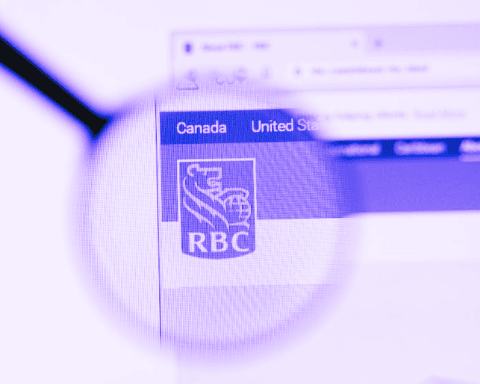Time is running out to prevent the worst impacts of the climate crisis. Corporate environmental leadership has never been more vital for cutting emissions, protecting precious forests and water bodies, and building resilience. But with so many different metrics available and environmental data lacking standardization in the wider marketplace, it can be challenging to identify which organizations are truly committed to deep and impactful sustainability action. How can we sift through the greenwashing and spot genuine action?
In 2020, 10,000 companies, cities, states and regions disclosed data on environmental performance through our global environmental non-profit CDP (formerly the Carbon Disclosure Project), making us the largest repository of information on climate change, deforestation and water security issues. Companies and investors commonly look to CDP for data on basic information such as greenhouse gas emissions.
Standardized disclosure allows the analysis of distinct yet related metrics that, when read in tandem, reveal whether a company is as committed to the environment as it claims. These four questions from our annual questionnaire can reveal whether a corporation is merely setting lofty goals or is backing up those goals with deep and impactful action.
1. Is the company linking emissions-reduction targets to executive compensation – and are there incentives in place that encourage progress toward meeting these targets?
Many companies are setting net-zero targets, but if they don’t have the governance structures in place to drive them forward, it’s difficult to believe they are seriously committed to meeting them. Linking targets to executive compensation is one of the most effective ways a company can entwine ESG into its corporate strategy and is a critical measure to build top-down momentum toward rapid decarbonization.
CDP data shows that just 10% of global companies disclosing through CDP indicate that a board member, C-suite member or other high-ranking executive receives compensation based on meeting emissions-reduction targets. In North America, HP Inc. and Canadian National Railway are among vanguard companies that have set science-based emissions-reduction targets and have tied these targets to executive compensation. Less than 10% of companies globally have taken this ambitious step.
2. Is the company identifying risks in its supply chain related to climate change – and is it engaging its suppliers to manage those risks?
One difficult lesson of COVID-19 for many companies has been that vulnerabilities within their supply chains can put them at risk. Supply chain emissions are on average 11.4 times higher than operational emissions. Of the companies disclosing through CDP, only 12% identify upstream risks in the value chain related to environmental impacts and are trying to manage those risks by engaging with their suppliers around sustainability.
Manufacturer Stanley Black & Decker sources steel and copper from countries experiencing severe weather due to climate change, specifically Western Australia (which suffers through droughts) and Chile (which struggles with droughts and floods). To meet its target of having two-thirds of its supply chain develop science-based Scope 1 and Scope 2 targets by 2025, Stanley Black & Decker collects primary emissions data annually from suppliers, representing 67% of its total procurement spend, via CDP Supply Chain. And to preempt potential supply chain disruptions, the company uses software to track inclement weather and other events affecting their sites in real time.
3. Is the company identifying risk related to regulation – and is it engaging with policy-makers on behalf of particular legislation that supports environmental resilience?
Many companies identify regulatory uncertainty around environmental issues as a risk to their business. For some, the shifting regulatory landscape – or worse, the absence of national climate policy – was a greater concern than the impact of any particular climate policy itself.
Companies that engage with the government to support pro-environment policy are demonstrating their commitment to a sustainable future. For example, the software company Salesforce discloses its public support for federal carbon-pricing legislation and clean energy policy, and last year signed a joint letter urging the U.S. to remain in the Paris Agreement. Strong climate policy is vital to confront the climate crisis. Even if companies are taking action within their own operations, they should not be considered true environmental leaders unless they support public policy that drives forward the low-carbon transition.
4. Is the company identifying business opportunities related to the low-carbon transition – and is it investing in these low-carbon products and services?
Companies that are truly in the vanguard when it comes to sustainability are not only identifying risks and addressing them – but are also seeking opportunities related to the low-carbon transition. In 2019, CDP found that global companies identified US$2.1 trillion in potential opportunities on the table if they take sustainable action. Technology company Cisco sells smart building products that improve building operational energy efficiency and reduce emissions – a market it pegs as a US$2-billion opportunity. Cisco has invested for years in such products and services; the company calculates that 64% of its 2019 revenue can be considered “green.”
In the years to come, we’ll no doubt see more companies integrate their environmental goals into their marketing strategies. While all of the above are indicators of a company’s seriousness about sustainability, the first vital step in any company’s commitment is disclosure. That disclosure must be backed up with real structures within the company, including ambitious (ideally science-based) decarbonization targets and tangible action. With the clock ticking on the climate crisis, we simply don’t have time for half-baked promises. Companies need to follow the through-line across their entire operations, translating sustainability goals into serious, immediate action.
Simon Fischweicher is the head of corporations and supply chains at CDP North America.





